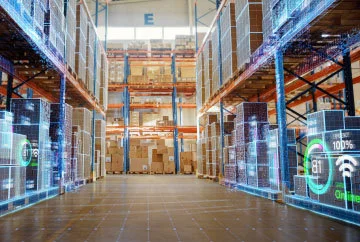Large global enterprises have always thrived on highly customizable ERP solutions. As their enterprise structures are complex, and their needs diverse, OOTB ERP solutions often fall short of their needs. Despite the business value that such ERP solutions hold for global enterprises, they can rapidly turn into a legacy burden. This is where a two-tier ERP strategy comes into play.
A two-tier ERP strategy leverages multiple ERP solutions to support divergent needs of multiple parts of an organization. These ERP solutions are classified into two primary categories:
- Tier 1 ERPs: These are typically industry-leading ERP solutions which are highly customizable and support complex needs of large organizations. Examples include ERP solutions from SAP or Oracle or Infor (XA, LN, M3).
- Tier 2 ERPs: These are ERP solutions that appeal to small and mid-sized organizations/business units within large organizations. They support peculiar business needs well, and are generally delivered to businesses as a service and managed by the provider themselves. Examples include Automatica, Dynamics 365, Infor CSI, Unit4, and FinancialForce.
A two-tier ERP strategy is one of the ways in which a hybrid ERP strategy is deployed in an Organization.
When to use a two-tier ERP strategy?
A two-tier ERP strategy can prove strategically and financially valuable in these scenarios:
- Mergers and Acquisitions: In M&A scenarios, a large enterprise may acquire a smaller business which does not need a Tier 1 ERP solution. In such a situation, enforcing a Tier 1 ERP on the new business unit will burden it with high costs and IT needs.
- Subsidiary business units: An organization composed of subsidiary business units performing specialized functions will typically require a Tier 1 ERP at its headquarters for , whereas the subsidiary will find a Tier 2 ERP sufficient for its needs.
Moreover, organizations composed of units with divergent business models (such as manufacturing a product and retailing it or running an affiliate network) will also benefit from a two-tier ERP approach.
Research by Gartner showed that 59% of business owners have partially or fully infused IoT based solutions, while more than 12% are planning to implement and set things in motion within two years.
The benefits of the hybrid ERP approach
Large enterprises have started using ERP systems in the early 2000s. Over time, they have not only developed a plethora of complex customizations, but also built large in-house teams to support these customizations. Legacy ERP solutions were running on-premises, and brought with them long upgrade cycles and high maintenance costs – in return for supporting complex business needs. For such enterprises, adopting a two-tier ERP strategy can unlock the following benefits:
- Achieve cost savings: A tier-2 ERP usually costs less to deploy and maintain, thereby bringing the TCO down for subsidiaries and the parent organization too.
- Stay current with technology: Because tier-2 ERPs are cloud-based, they enjoy automated upgrades delivered by the solution provider on a regular basis, thereby bringing new features to the business.
- Improve employee experience: Unlike tier-1 ERPs, tier-2 ERPs do not bring a steep learning curve and usually deliver a better user experience – thereby improving employee experience.
- Support international needs: Tier-2 ERPs may be needed to bring language support or bridge cultural differences in cases where an organization has an international footprint, and when the tier-1 ERP doesn’t offer such features natively.
- Business-technology alignment: Tier-2 ERPs can perform some business functions such as supply chain management or supplier collaboration better than tier-1 solutions. Therefore, a hybrid strategy improves business-technology alignment by better supporting diverse business needs.
Lastly, a hybrid ERP strategy can serve as an entry-point or an accelerator of cloud adoption.
Accelerate cloud adoption with a hybrid ERP strategy
A two-tier ERP strategy ultimately builds a connected enterprise by bridging subsidiaries or small business units with the larger organization via integrations. A tier-2 ERP solution delivered as a service will typically run on the cloud, and built in a modular fashion. This opens up the possibility of ingesting data from a tier-2 ERP into a tier-1 deployment via APIs in real-time or in batches, thereby enabling the organization to test the waters with cloud, or accelerate cloud adoption across the organization.
Needless to say, cloud-based tier-2 ERP solutions bring to smaller business units the agility, flexibility, scalability, and digital-first principles of the cloud. As a result, the deployments can be scaled up and down depending on the needs of the business, and support business needs with near-zero IT support – or alternatively, by leveraging the IT workforce of the larger organization remotely. Finally, cloud-based, fully managed ERPs will completely eliminate the burden of securing the deployment or owning IT infrastructure, which enables the business unit to devote complete focus on its speciality.
So, how should enterprises devise and implement a two-tier ERP strategy for their business?

Devising and implementing a two-tier ERP strategy
The process of devising a hybrid ERP strategy entails business needs assessments, a thorough review of the solution landscape, and contextualizing the choices within the technology framework of the larger enterprise. It will be worth noting that tier-2 ERP solutions are often, also provided by tier-1 ERP providers.
Consider the following scenario:
A two-tier ERP in the SAP/Oracle ecosystem
In the SAP ecosystem, a global manufacturing enterprise will typically leverage the S/4HANA platform. In the Oracle ecosystem, a global enterprise could be running on an on-premise Oracle NetSuite deployment. However, its regional sites can leverage the SAP Digital Manufacturing Cloud solution to remotely manage and control shop floor activities and build a connected factory that relays supply chain data and financials to the tier-1 ERP. On the other hand the tier-1 ERP can share PLM data with the regional sites.
Similarly, manufacturing enterprises operating in the Infor ecosystem will deploy Infor XA for larger business units, given its ability to handle all types of manufacturing engineer-to-order processes, whereas smaller units will run on the Infor CloudSuite Industrial, which provides comprehensive and configured business processes for specific needs of discrete manufacturers.
Key considerations
In devising a two-tier ERP strategy, here are some of the key considerations that must be made:
- Consider who gets to decide which tier-2 solution to pick
While the subsidiary or the business unit in question will be better informed about their needs and the potential solutions to be deployed, such a strategy may lead to multiple units employing different solutions to support their own needs. - Consider tier-2 solution’s fit with the larger organization
Interoperability of the tier-2 solution with the tier-1 ERP will be crucial to unleash the key benefit of a hybrid ERP strategy: that is, the agility and flexibility of a tier-2 solution combined with a digital integration into the financial and operational workflows and decisions of the organization as a whole. - Consider rolling out a hybrid ERP strategy with an implementation partner
When each child organization implements a tier-2 solution with different implementation partners, they effectively inject varying philosophies into the hybrid ERP system. This can result in unnecessary and difficult-to-maintain customizations in the tier-1 ERP, and subtract from the RoI of the undertaking.
Typically, a selection of tier-2 solutions is offered to the subsidiary or a business unit by the board after making these considerations, and picking the specific solution is left to the business unit in question. However, fostering collaboration between the parent organization and the business unit will be crucial to build a synergetic system that results in mutual benefit. Implementation partners are usually well-suited to play this role, as they collaborate with both the units, understand the technology landscape from either perspectives, and brainstorm options with the CTO or the CIO.
What next?
A two-tier ERP strategy comes with multiple business benefits, and simultaneously accommodates the needs of smaller business units and the parent organizations. In addition, it can accelerate cloud adoption and free key business functions from the legacy burden of highly customized ERP solutions of the larger organization while setting the enterprise towards an accelerated cloud roadmap. However, devising a hybrid ERP strategy entails making sensitive business decisions that will inevitably bring a major impact on the organization’s financials. As a result, tapping into expertise and experience from leading technology players in the industry will be crucial to making a two-tier ERP strategy work in favor of the business.
Recommended



